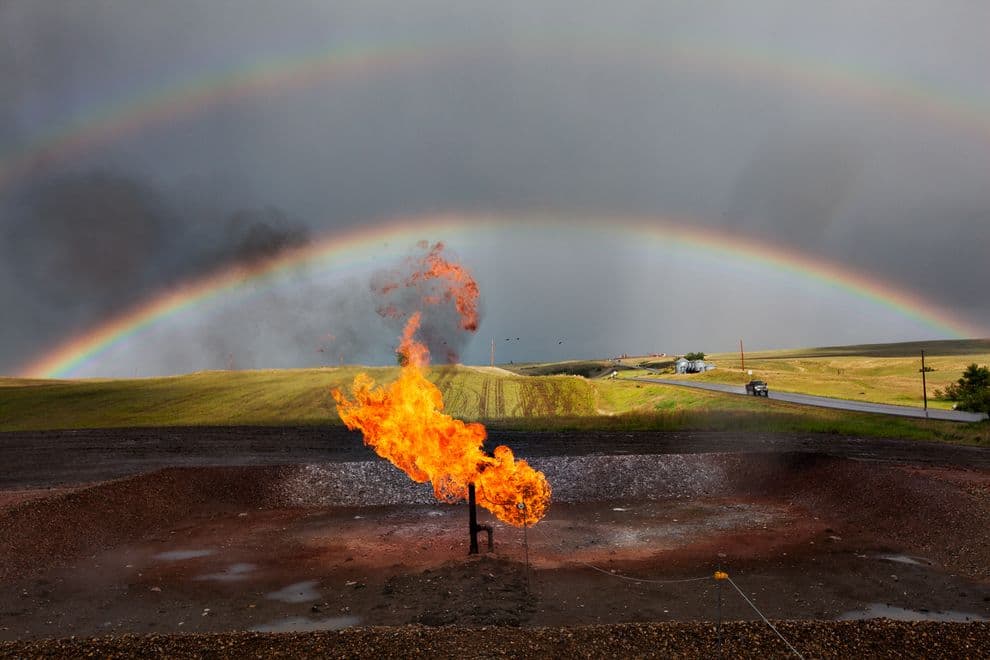In America’s busiest oil field, roughly $1 million worth of natural gas goes to waste each day.
Shale drillers in the Permian Basin of Texas and New Mexico say they have no way to move their gas – a byproduct of oil drilling – to market because there aren’t enough natural-gas pipelines. Instead, they are getting rid of the excess gas by setting it on fire, a practice known as flaring.
Companies flare about three percent of the gas they extract in the Permian. But production in the basin is so high that the volume of gas burned every day would be large enough to supply the daily needs of states such as Montana or New Hampshire, by some estimates. The flaring also produces greenhouse gas emissions equivalent to 2 million cars.
Shale drillers are flaring with the consent of state regulators. Until more natural-gas pipelines and storage facilities are added, the only alternative to burning gas would be to reduce some of the area’s lucrative oil production, which has supercharged the region’s economy and boosted overall US crude output to a record of around 11 million barrels a day.
Texas officials say they expect the issue to resolve itself eventually once the necessary infrastructure is built.
But flaring is poised to worsen in coming years as companies rush in to pump more oil from the Permian. While oil fetches about $69 a barrel, natural gas currently sells for less than $3 a million British thermal units and has become a largely unwanted side effect of the region’s oil boom.
Flaring topped 320 million cubic feet a day in the second quarter, according to an analysis of public data compiled by Rystad Energy, an energy consulting and research firm. The data combine the gas that was burned or released directly into the atmosphere – a practice known as venting, which is worse for the environment than flaring.
An analysis of demand data from the Energy Information Administration also shows that the gas burned in the Permian every day exceeds the daily consumption of many small states.
As Permian oil output continues to grow, Rystad Energy predicts flaring will more than double in the next year, and won’t substantially drop until at least late 2019, when new gas pipelines are set to start operating.
Royal Dutch Shell, which has pledged to eliminate “routine” flaring by 2030, flared at among the highest rates of large Permian gas producers in the first half of the year. The company burned about seven percent of the gas it produced in the basin during the second quarter, down from nine percent during the first quarter, according to Rystad Energy.
Venetta Seals, mayor of Pecos, which depends economically on Texas oil and gas, said she views the combustion as inevitable: “What other options are there? Without the infrastructure being here, the only other solution is what, they stop drilling? That would certainly turn things upside down out here if that were to stop happening.”
img:preservethebeartoothfront.com

